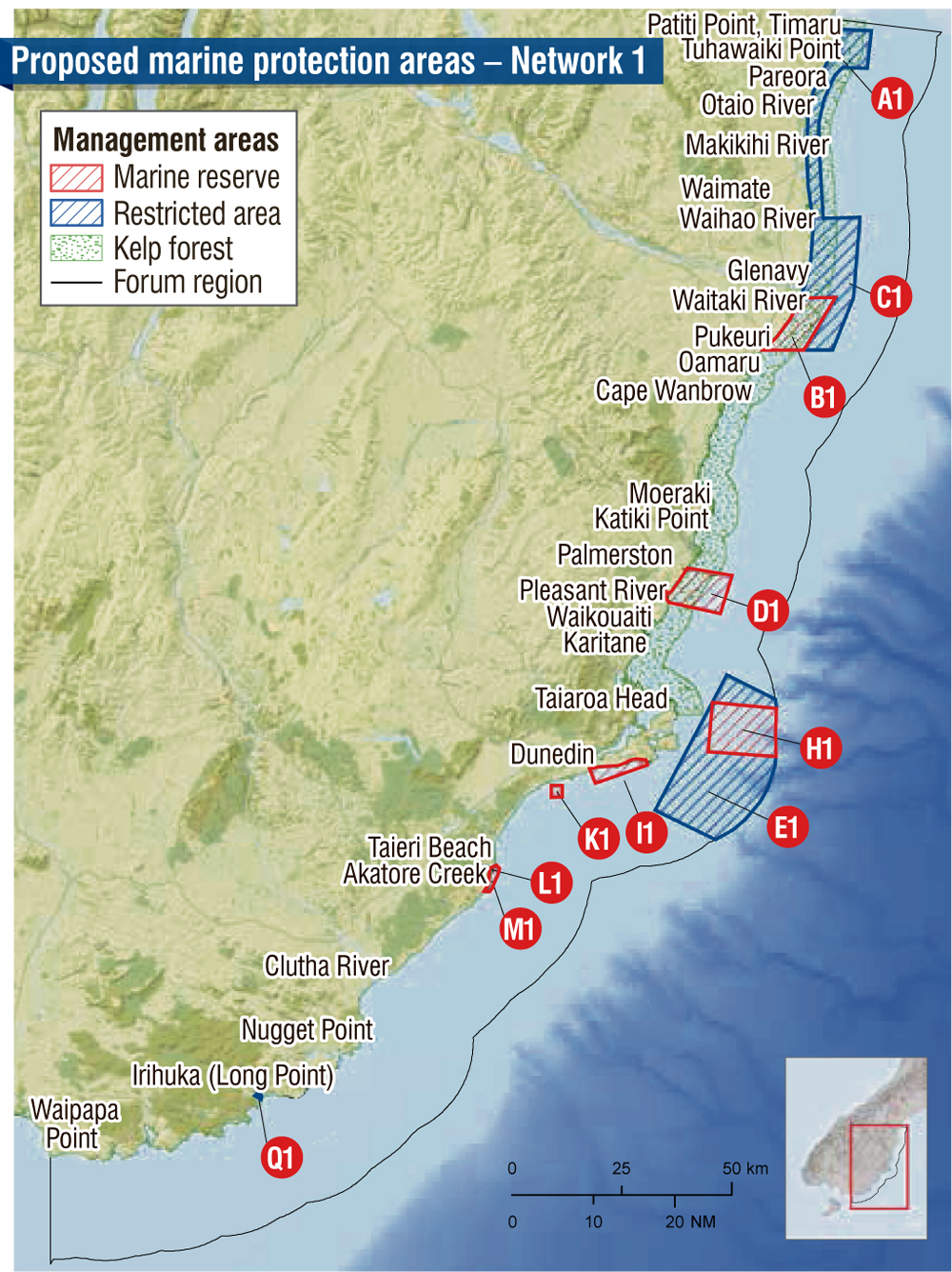
Conservation Minister Eugenie Sage and Fisheries Minister Stuart Nash released the final report yesterday from the South East Marine Protection Forum, which recommended two alternative marine protection networks after a consensus could not be reached among members.
Members included Ngai Tahu, commercial and recreational fishers, the tourism, science and environmental sectors, and the wider community.
Forum chairwoman Maree Baker-Galloway said there had been tensions between the different sectors which had led to many heated, but constructive, debates.
The two networks mirrored the significant differences between the various groups and sectors.

It is supported by the tourism, science and environmental sectors.
Network two covers 366sq km, and includes three marine reserves, two type-two marine protection areas and 12 habitats.
It is supported by the commercial fishing and one of the recreational fishing representatives.
But the fishing industry is so unhappy with the report it has asked for a review of the process.
Commercial fisheries could lose between $1.2 million and $3.6 million because of lost access, they say.
Forum member and Otago Rock Lobster Association executive officer Simon Gilmour said the report was biased because it lacked recognition of existing reserves and fishing management practices, such as the quota management system.
When the existing areas were combined with those proposed in network two, there were 27 habitats protected.

''We've spent millions of dollars and we've got no further down the road to rebuilding the prey species sea birds depend on.''
The two recreational fishing representatives on the forum were split, with Steve Bennett in favour of network two and Tim Ritchie in favour of network one.
Tautuku Fishing Club president Brett Bensemann said the wishes of recreational fishermen had been overlooked in favour of environmentalism.
Scientists and environmental groups have also criticised both proposals, saying they don't go far enough to protect native species.
University of Otago zoologist Prof Liz Slooten said scientists overwhelmingly asked for larger protected areas, buffer zones and better protection for mobile species.
The two proposals were based on social compromise rather than science, Prof Slooten said.
Forum member Neville Peat said the group had ended up with two well-thought out proposals more similar than they might appear.
''Some of those proposals are overlapping, though there may be different boundaries and differences in size.''


























